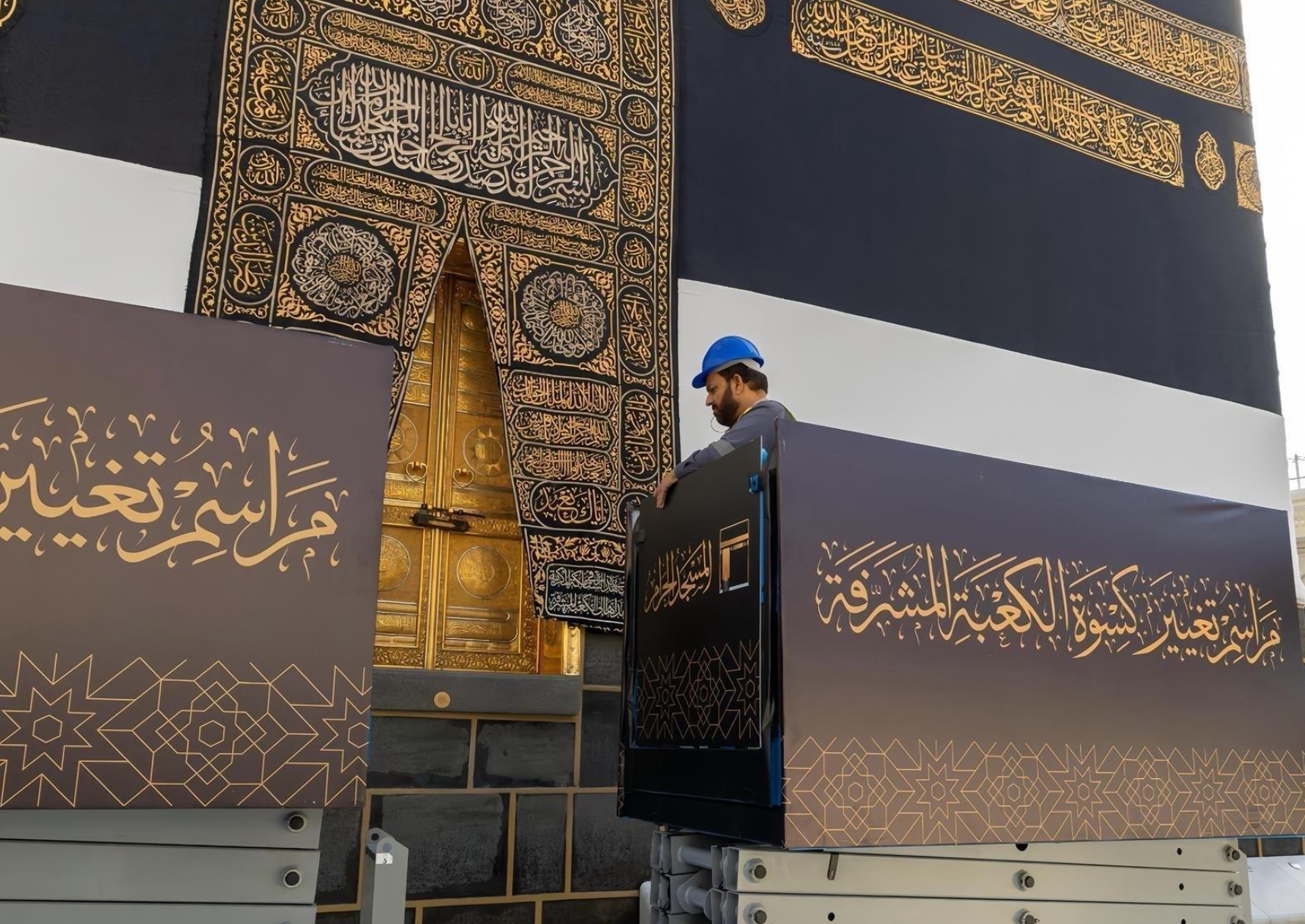
Kaaba Kiswa Changed in Record Time Through Innovative Methods
The General Presidency for the Care of the Affairs of the Grand Mosque and the Prophet’s Mosque completed the annual ceremony of replacing the Kiswa of the Holy Kaaba for the year 1447 AH in record time, beginning the meticulous operation at midnight on Thursday, Muharram 1, and concluding by 6:40 a.m. the same day, marking a notable four-hour reduction compared to previous years.
This swift completion represents a significant qualitative achievement, highlighting major improvements in operational efficiency and the seamless integration of implementation mechanisms. This success is attributed to an advanced system based on meticulous planning, precision, and smooth task execution.
The presidency credited this accomplishment to a combination of innovative technical and organizational measures. A key factor was the adoption of a precise mechanism for pre-sewing the four sides of the Kiswa. Preparations for the Holy Kaaba included determining the upper and lower limits of the Kiswa belt using adhesive tape, which significantly reduced the time previously required for weighing and securing the belt. Additionally, the ropes used to lift the Kiswa were prepared in advance by pre-determining the appropriate height, allowing technicians to access the fixing points on the Kaaba’s roof quickly and accurately.
Furthermore, the technical staff underwent extensive training well in advance, which enhanced their skill and confidence, clearly reflected in the quality of their performance and the speed of completion. The work teams effectively used advanced technologies and modern tools, boosting efficiency and ensuring safety throughout all stages, from removing the old Kiswa to securely installing and fastening the new one at the corners of the Holy Kaaba. These efforts underscore the wise leadership’s commitment to continuously developing services for the Two Holy Mosques and enhancing performance quality in all aspects related to the care of the Holy Kaaba, honoring its profound religious and historical significance for Muslims worldwide.








